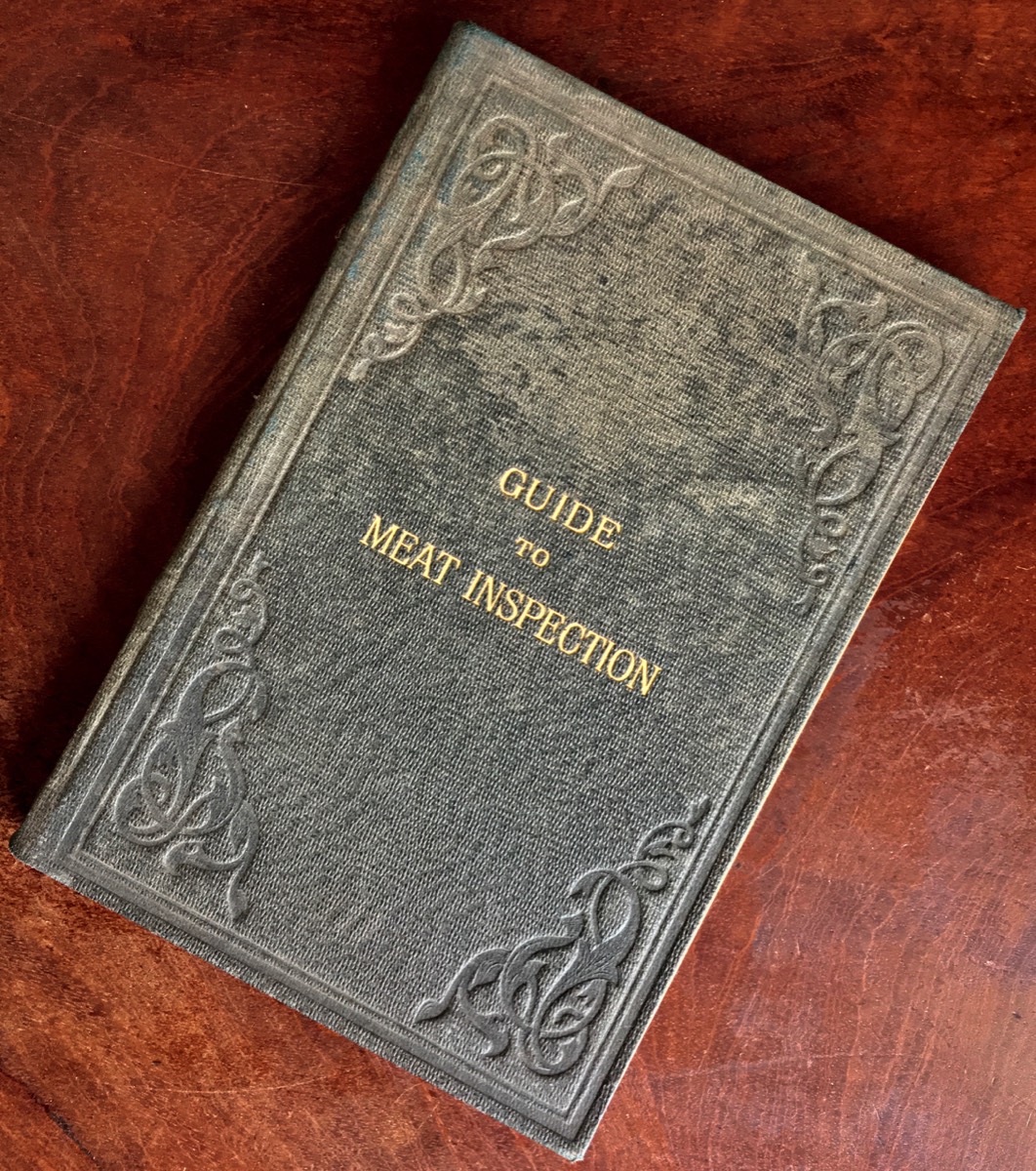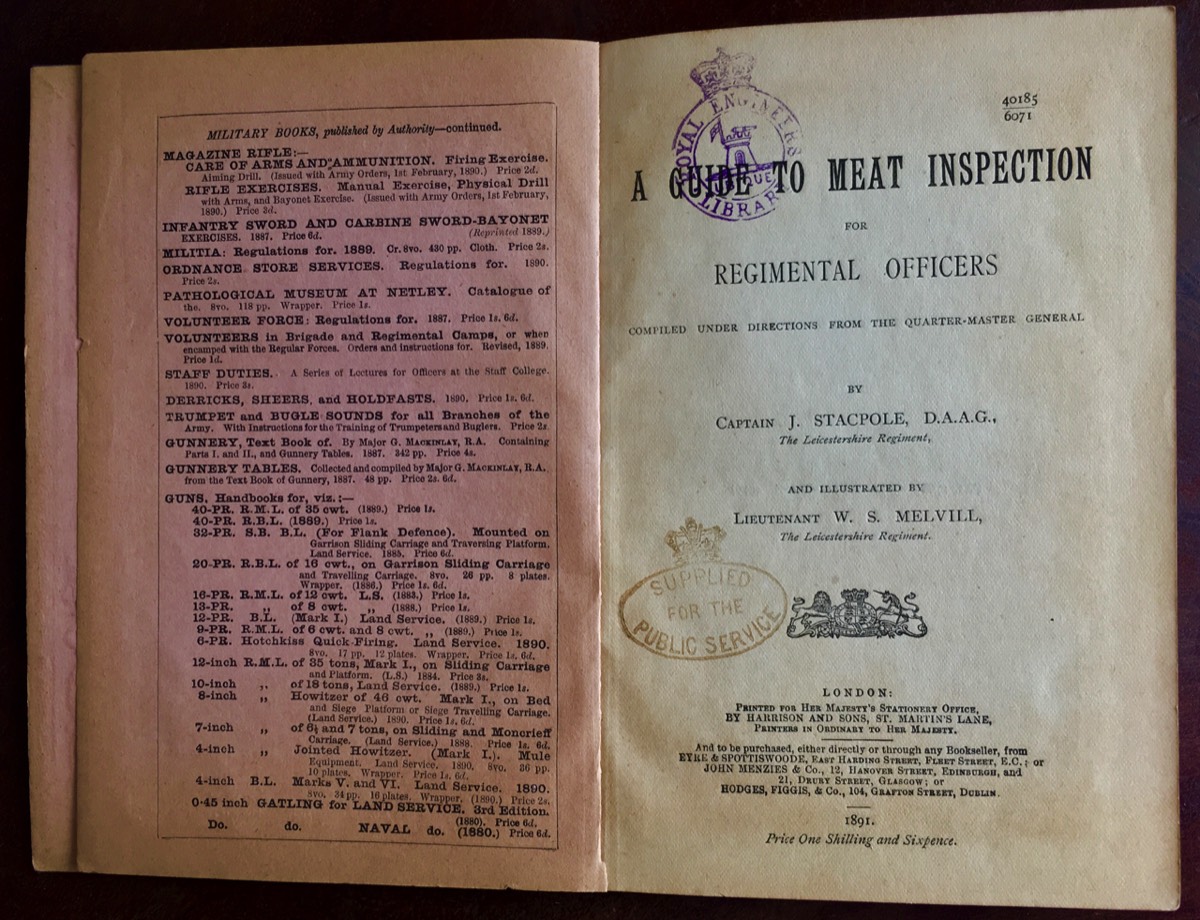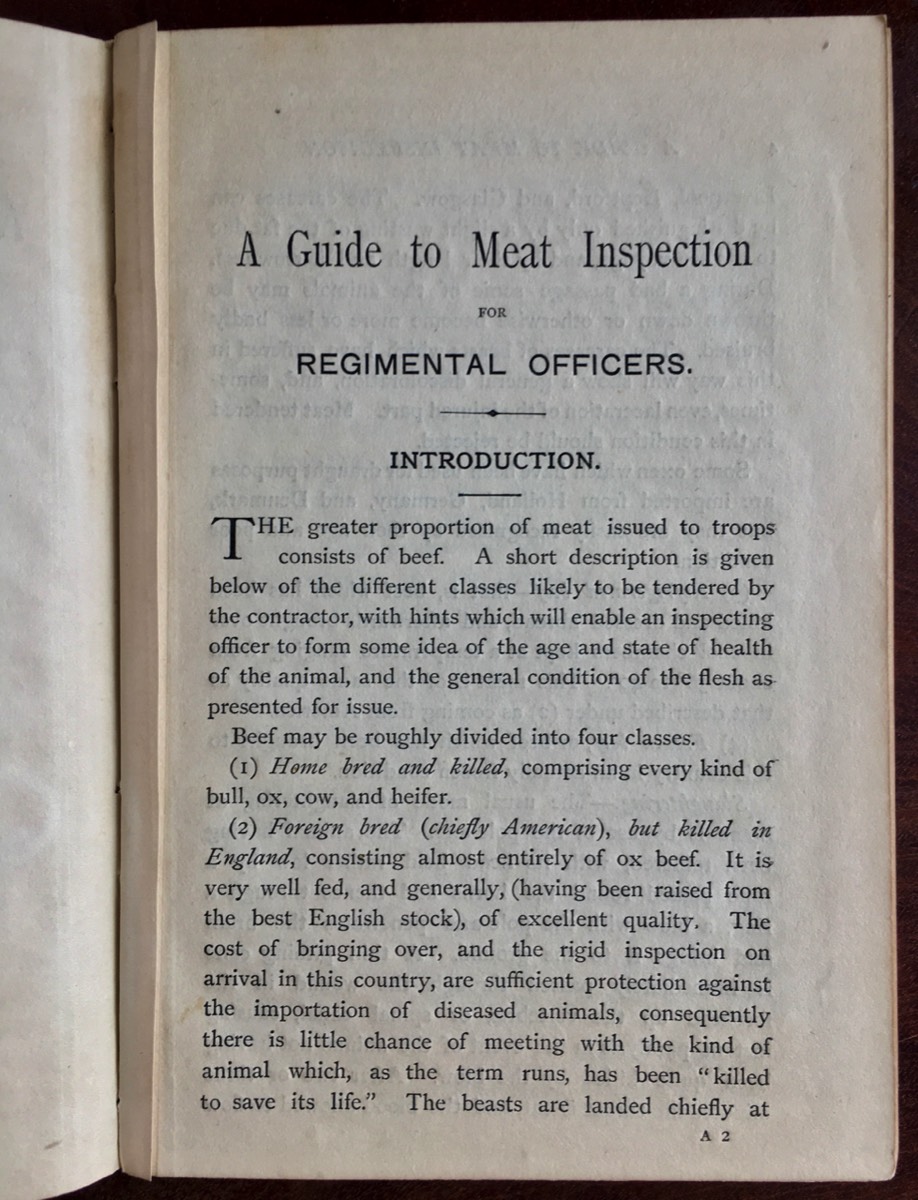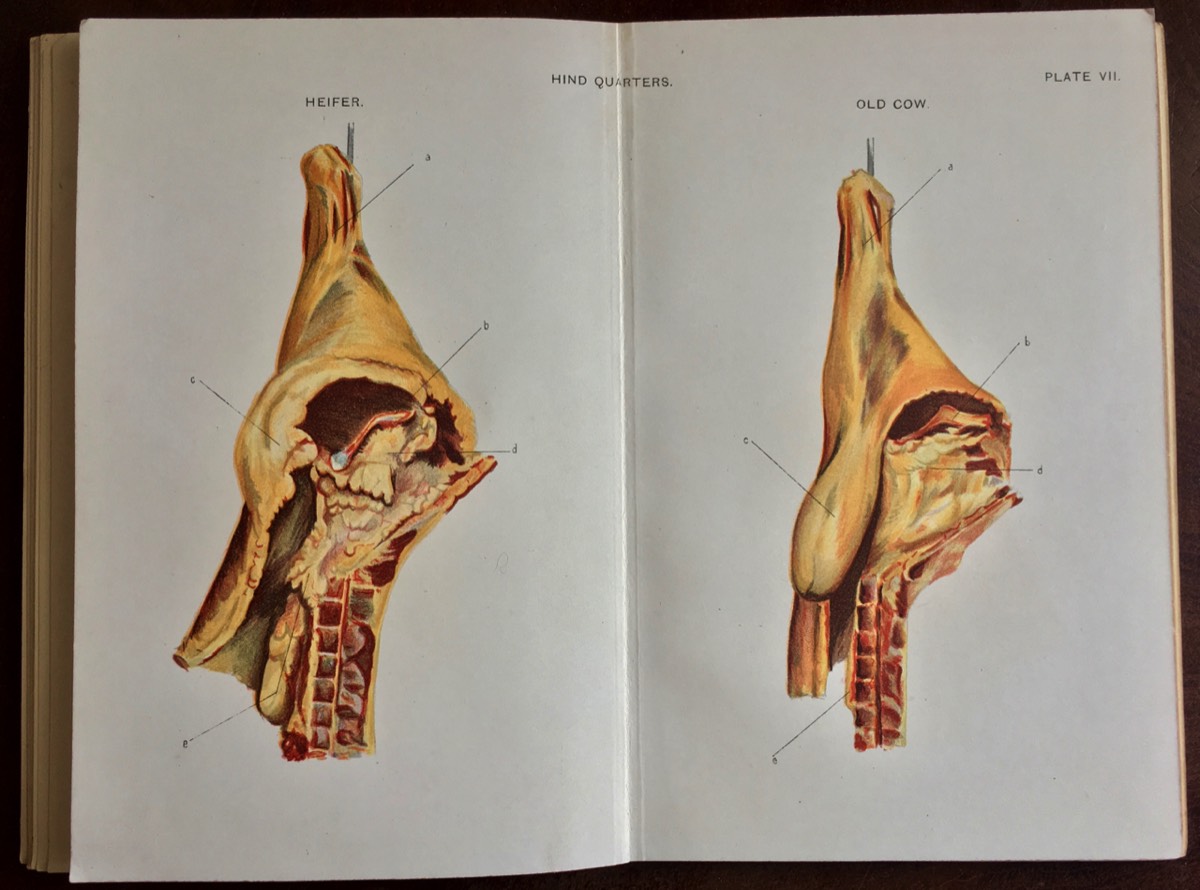A Guide to Meat Inspection for Regimental Officers
Compiled under directions from the Quarter-Master General
Captain J. Stacpole, D.A.A.G., The Leicestershire Regiment. Illustrated by Lieutenant W. S. Melvill, The Leicestershire Regiment
Harrison and Sons, Printers in Ordinary to Her Majesty, 1891
“(2) Foreign bred (chiefly American), but killed in England, consisting almost entirely of ox beef. It is very well fed, and generally, (having been raised from the best English stock), of excellent quality. The cost of bringing beef over, and the rigid inspection on arrival in this country, are sufficient protection against the importation of diseased animals, consequently there is little chance of meeting with the kind of animal which, as the term runs, has been killed ‘to save its life’. The beasts are landed chiefly at Liverpool, Deptford, and Glasgow. The carcasses can be distinguished only by a slight wasting of the fat due to the sea voyage, and by their length and narrowness. During a bad passage some animals may be thrown down or otherwise become more or less badly bruised. The carcasses of beasts which have suffered in this way will show a general discoloration, and, sometimes, even laceration of the injured part. Meat tendered in this condition should be rejected.”
© L.A. Davenport 2017-2024.
Cookies are used to improve your experience on this site and to better understand the audience. Find out more here.
Guide to Meat Inspection | Pushing the Wave



